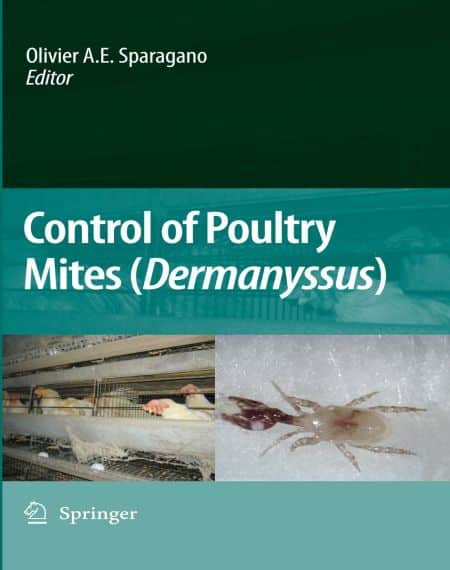This book Control of Poultry Mites (Dermanyssus) summaries worldwide research activities at laboratory and farm levels to control the poultry red mites.
Control of Poultry Mites (Dermanyssus)

43 experts from 11 countries have been drawn into to present new control methods based on plants, predators or vaccine developments alongside updated chemical, physical and managerial approaches to tackle this ubiquitous ectoparasite which is responsible for economic costs for the poultry industry and for human health-related problems. Genetic and metabolomic diversity within the mite populations highlight the needs for an integrated approach for the poultry industry. Readers will understand the state-of-art in new research lines which could bring this worldwide and emerging ectoparasite under control.
This special issue of Experimental and Applied Acarology is critically arriving at the right time. Since Salmonella vaccination is now widespread within the poultry industry, it seems the new economic, welfare and epidemiological problem is now the poultry red mite, Dermanyssus gallinae (also called red poultry mite, poultry mite, red mite or chicken mite). In 2012 the European Commission will ban traditional cage systems to move towards enriched cages or more open systems, such as free range or barns, which unfortunately could see mite population rocketing as they would be able to hide and proliferate better under these open environments.
Like with many blood-feeding arthropods the consequences of their attacks are multiple: welfare issues of birds, becoming anaemic, picking feather, becoming restless and aggressing each other; egg production going down, because of the increased fragility of the egg shell; blood staining of the eggs, usually leading to refusal by supermarket corporations; and the mites are reservoirs of—and transmit—several bacterial and viral poultry diseases, which may also have nasty effects on man.
Password: pdflibrary.net
